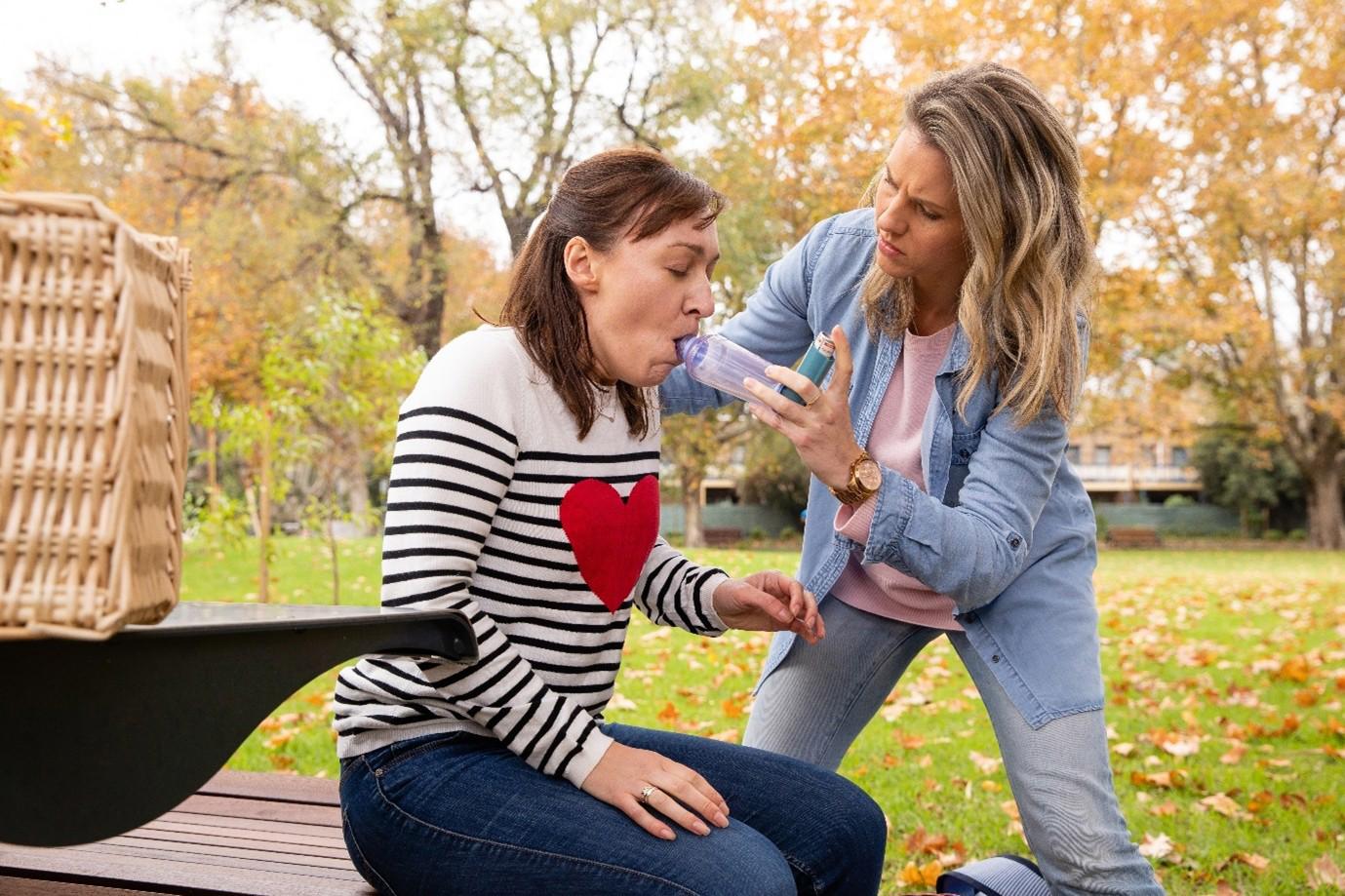Spring Allergies and Asthma: What Victorians Need to Know

Each spring, as the season shifts and grasses begin to flower, Victorians can find themselves facing not just hay fever but also heightened risks of asthma episodes. At St John Ambulance Victoria, our aim is to help you stay informed and ready, whether you have asthma yourself, support someone who does, or are simply looking to reduce allergy symptoms this year.
Springtime in Victoria & Why Allergies Spike
What’s happening in the air
In Victoria, the major grass pollen season, especially for ryegrass, typically runs from October through to December, when grasses flower and release large volumes of pollen.
Pollen counts have a direct impact on people with hay fever, allergic rhinitis, and those with asthma, high or extreme pollen days mean more symptoms, more flare-ups.
In addition, there is a specific phenomenon tied to certain weather patterns called “thunderstorm asthma”: when a storm with strong gusty winds occurs during high grass-pollen conditions, very fine allergen particles can be dispersed, and a spike in asthma events may occur.

Why spring is particularly tricky
The combination of warming weather, increased daylight, and vegetation, including grasses, growing strongly means more pollen in the air. Some years rainfall or soil-moisture changes can make the grass growth heavier, meaning more pollen.

Even on days where the average pollen forecast is “moderate”, short bursts of high pollen (e.g., after wind gusts) can trigger significant symptoms.
Victoria’s weather variability including wind shifts, storms and consistent grasslands, makes it more prone to these kinds of issues, we are often described as one of the “allergy capitals” of Australia.
Who is at increased risk for an asthma attack?

- People with a diagnosed asthma condition, especially if it’s not well-controlled
- Those with hay fever or seasonal allergic rhinitis, even if they have never had asthma, they may still be at risk of an asthma‐type episode under the right conditions.
- Anyone sensing worsening symptoms: tight chest, wheeze, increasing use of inhaler.
- On high pollen or thunderstorm forecast days: everyone should be extra prepared.
Symptoms of Hay Fever

Practical Strategies: Reduce Exposure & Manage Symptoms
Track the triggers
- Check daily pollen forecasts, such as via the Melbourne Pollen App (or website) which covers Victorian grass pollen counts.
- Check the Victorian Department of Health “epidemic thunderstorm asthma risk forecast”; it gives a three-day outlook on risk levels (green = low, orange = moderate, red = high) for Victoria.
- Pay attention to weather: windy days, gusts ahead of storms, or days following rain shift may raise pollen exposure.
At home and outdoors
- On high pollen days: keep windows and doors closed; if using air-conditioning, switch to recirculate mode rather than drawing in outside air.
- Shower and change clothes after being outdoors, pollen can cling to hair, skin, clothes.
- If possible, avoid outdoor activity, especially early morning or late afternoon when pollen tends to peak.
- Use indoor air-filters or HEPA (high efficiency particulate air) filters if you are sensitive or have asthma.
- Keep hay fever and asthma medications ready, even if symptoms are mild now.
Seasonal preparation

- If you have asthma, ensure you have a written Asthma Action Plan, and review it with your GP. This is particularly important ahead of the grass-pollen / thunderstorm season.
- Use your “preventer” inhaler (if you have been prescribed one) regularly; don’t rely solely on reliever inhalers.
- Discuss with your GP or pharmacist if your hay fever is getting worse; sometimes better management of allergies reduces the risk of asthma flare-ups.
Are hay fever and allergies the only leading cause of asthma?
Unfortunately, hay fever and common allergies are not the only cause of asthma. There are other factors that can contribute to an asthma attack.

First Aid: What to Do if an Asthma Attack Occurs
As outlined previously, it's vital that people in the community know the steps to provide first aid for asthma.

For a conscious person having an asthma attack:
- Sit the person upright, they should be comfortable, not lying flat.
- Keep calm and reassure them; loosen any tight clothing; allow fresh air or move them to a less-irritant environment.
- Assist with the inhaler: use the “4 x 4 x 4” method (for children) or 6 x 8 x 5 for adults (if required) i.e., 4 (or 6) puffs of the reliever inhaler, one puff at a time, with 4 (or 8) breaths after each puff, then wait 4 (or 5) minutes. If no improvement, repeat.
- If the person becomes unconscious, call triple-zero (000) immediately and follow DRSABCD.
- If symptoms don’t improve, or if they get worse (tightening chest, speaking in short sentences, lips turning blue, confusion) call 000 for an ambulance.
Useful resources & links
- Pollen forecasts (Victoria) - Melbourne Pollen website/app: https://www.melbournepollen.com.au/?utm_source
- Epidemic thunderstorm asthma risk forecast (Victorian Dept of Health): https://www.health.vic.gov.au/environmental-health/epidemic-thunderstorm-asthma-risk-forecast?utm_source
- Allergy and asthma triggers info - Asthma Australia: https://asthma.org.au/triggers/thunderstorm-asthma/?utm_source
- Equip yourself with practical first-aid skills, understand how to spot an asthma emergency, and learn how to act quickly.

Asthma First Aid
Melbourne is known as a global hotspot for the ‘thunderstorm asthma’ phenomenon, so we tend to experience more cases of it than anywhere else in the world.

Bitesize eLearning Course: Asthma
1 in 9 Australians have asthma and it can affect people of all ages. While most people successfully manage their asthma, emergencies can still occur.

Asthma First Aid – What Everyone Should Know
Are you one of nine (2.7 million) Australians who suffer from Asthma? Or do you have a close friend, family member or colleague who suffers from the common chronic condition?
